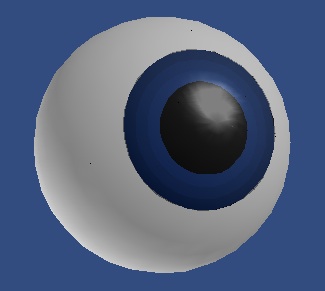If we apply procedural animation to iGor naively — by just adding time-varying noise to the rotation of the eyeball, the result is a sort of zombie eyeball, or perhaps an eyeball doped out on some serious medication. Its gaze appears to wander aimlessly, as though there is no focus or intentionality at work. Click on the image below to see what this looks like:

Of course the prospect of a zombie eyeball raises all sorts of interesting metaphysical questions. For one thing, does a zombie eyeball feed upon the brains of other eyeballs? Alas, such questions, while very important, are arguably beyond the scope of the current discussion.
Maybe reality isn’t your goal here, but real (human) eyeballs don’t move in anything approximating “smooth” motion. They move in quick, staccato jumps, known as “saccades”.
Exactly – that is indeed the point. We will indeed do right by old Émile Javal, but try not to get too fixated. 🙂
Stay tuned for tomorrow’s post.